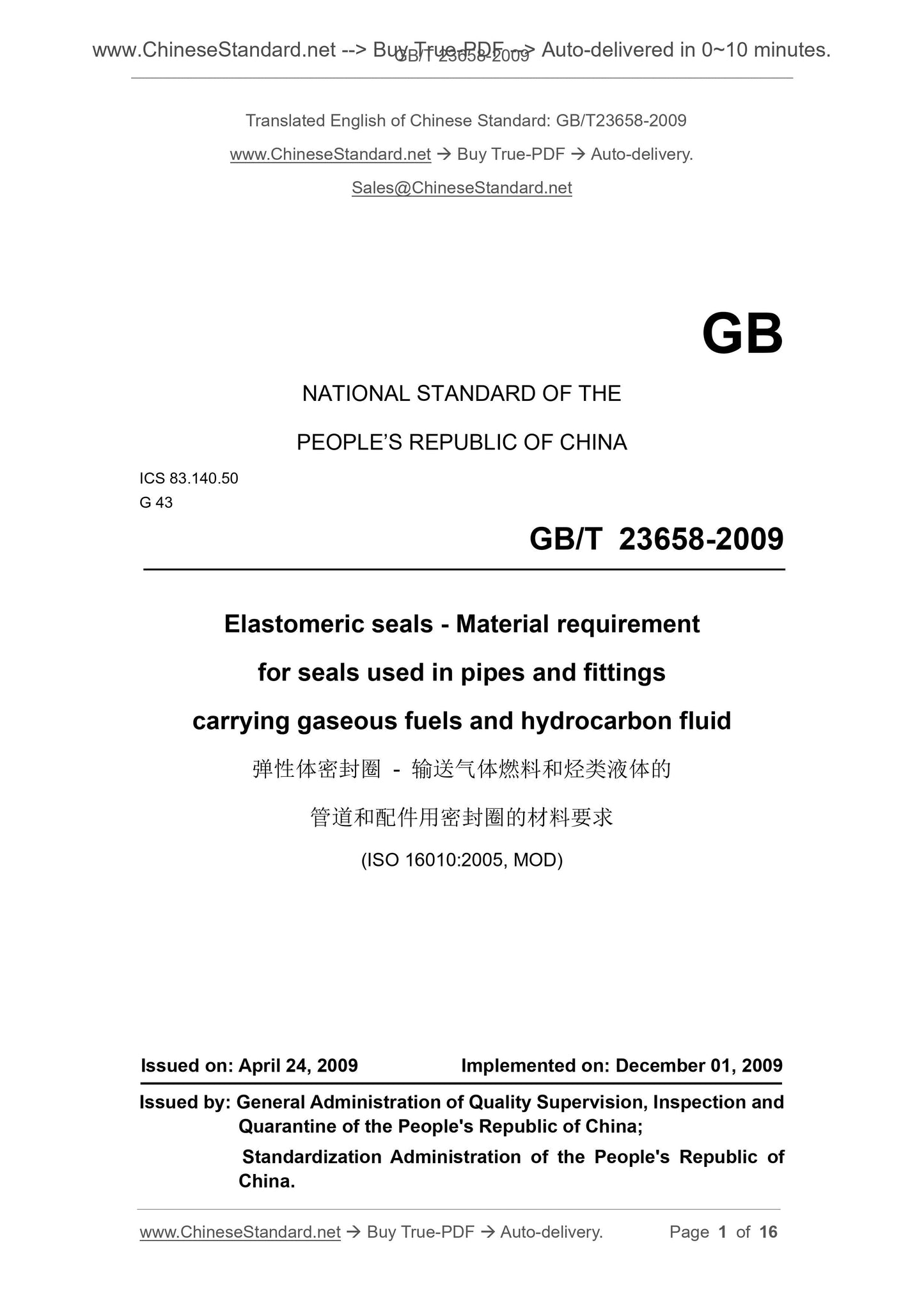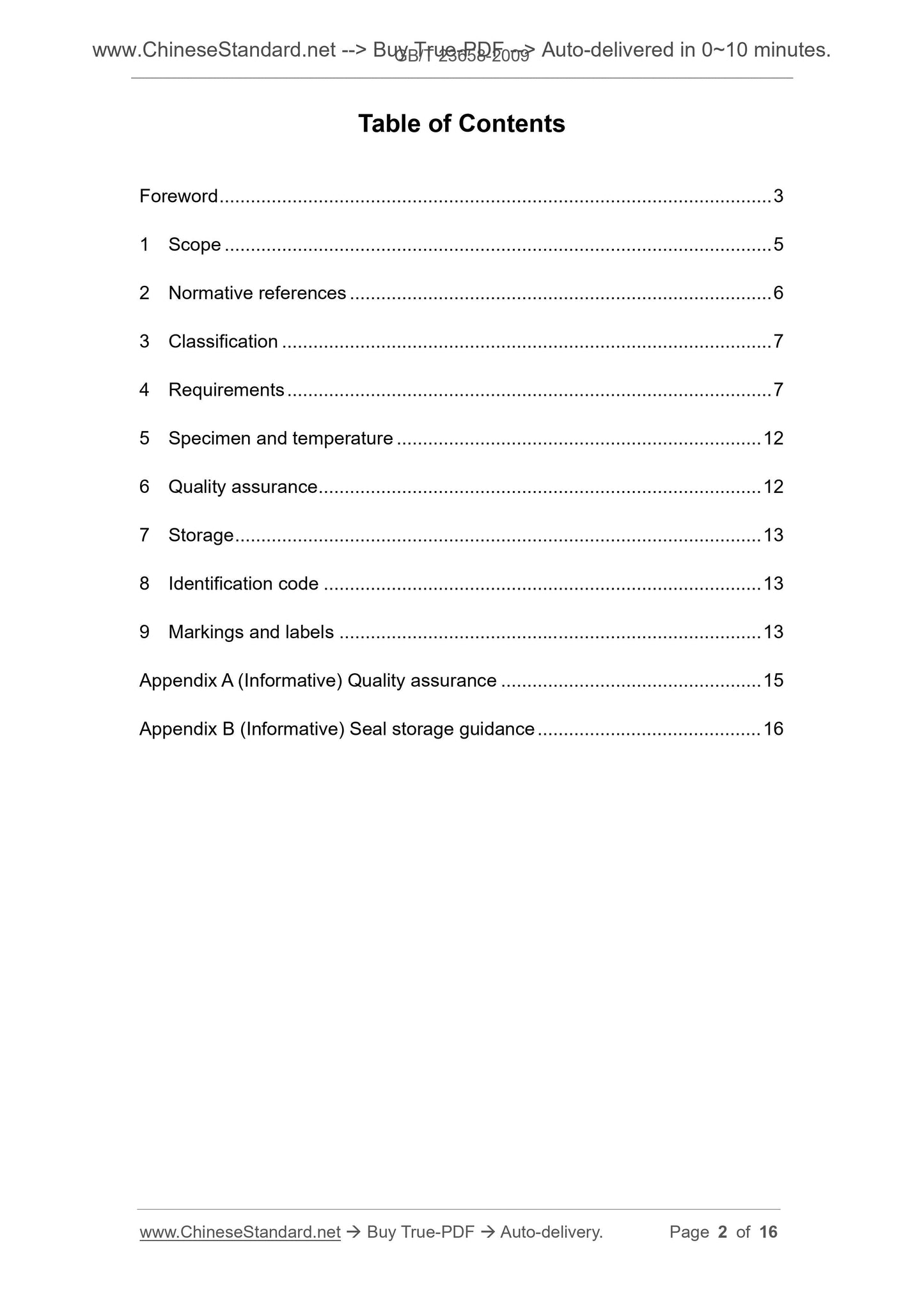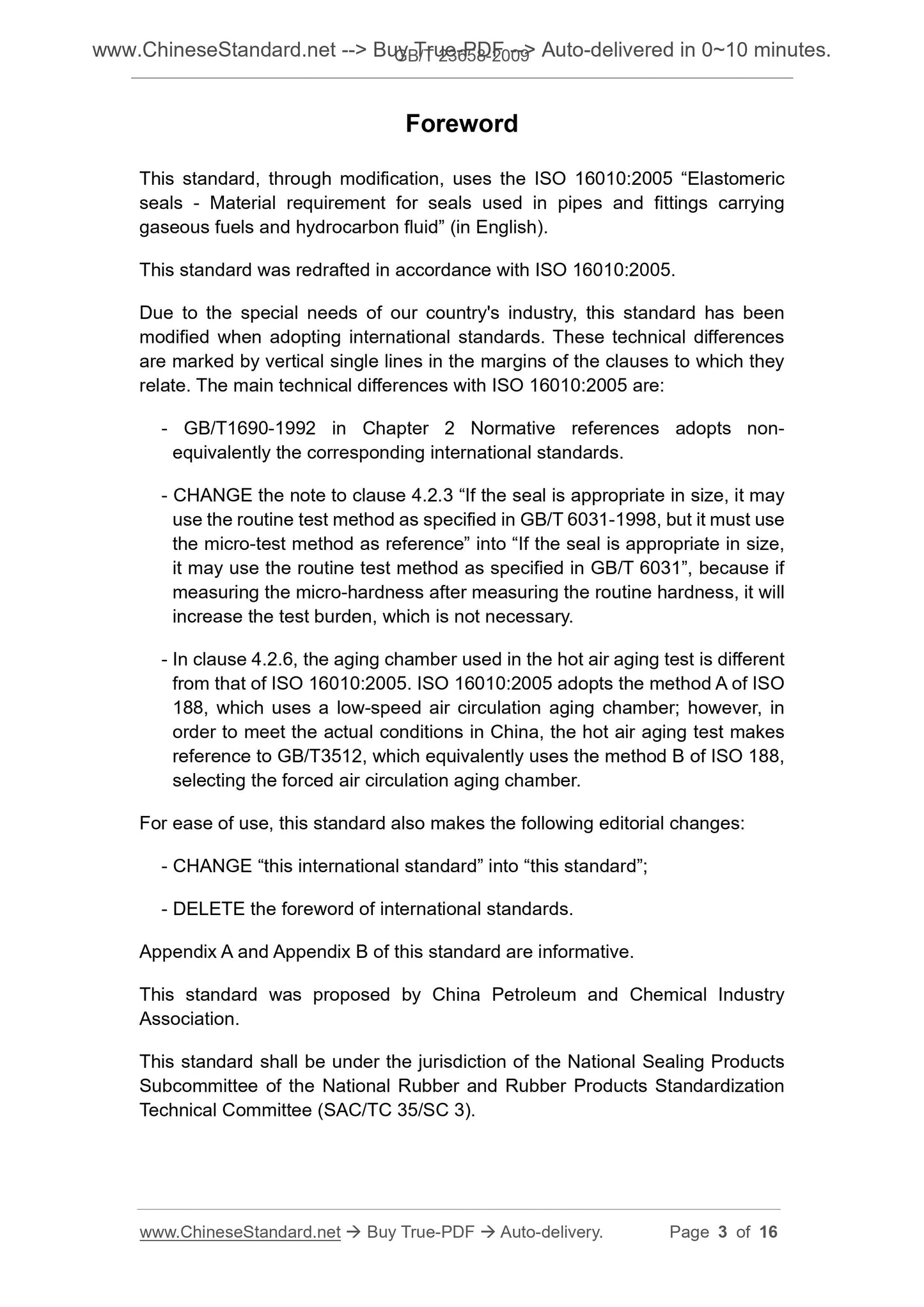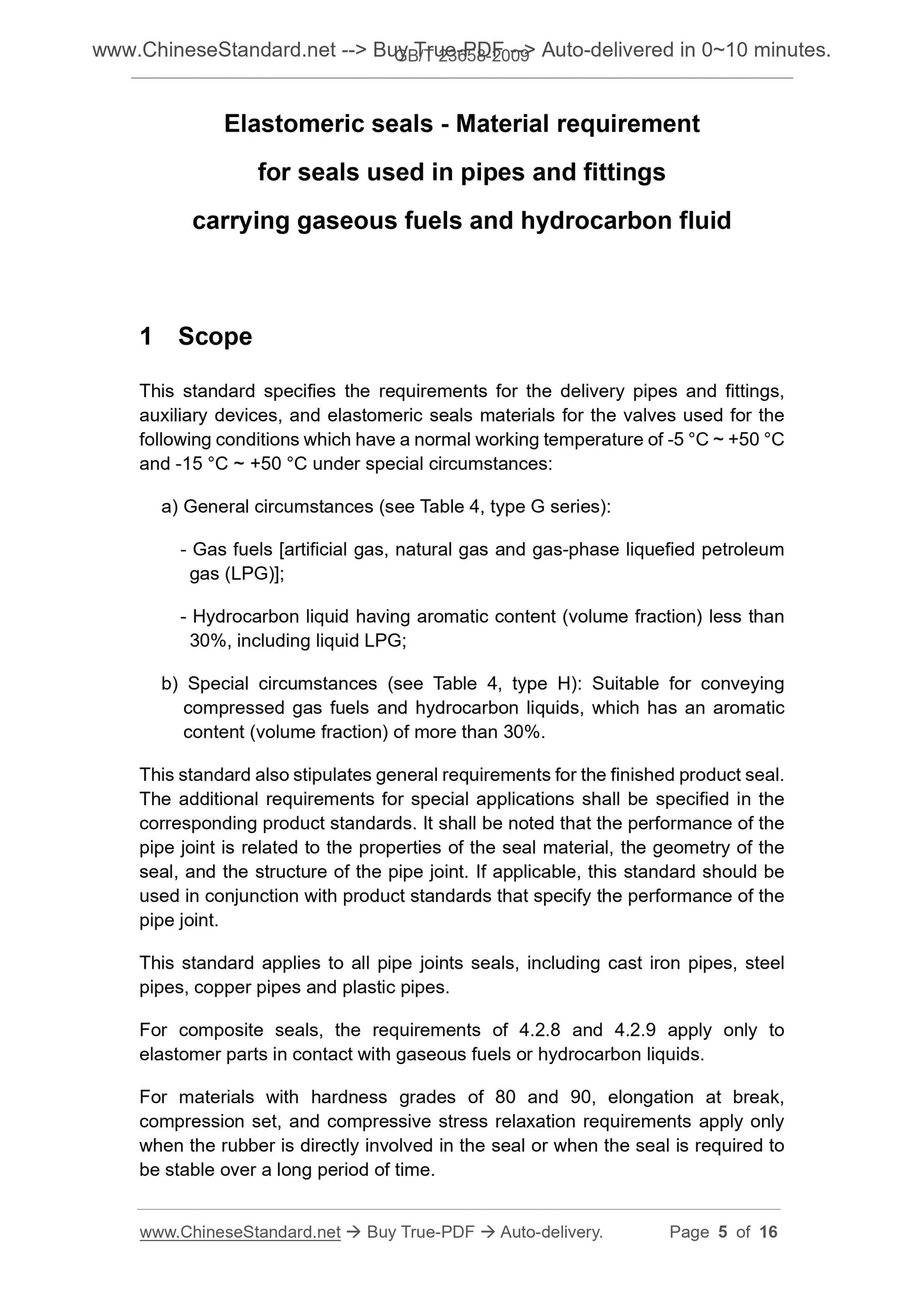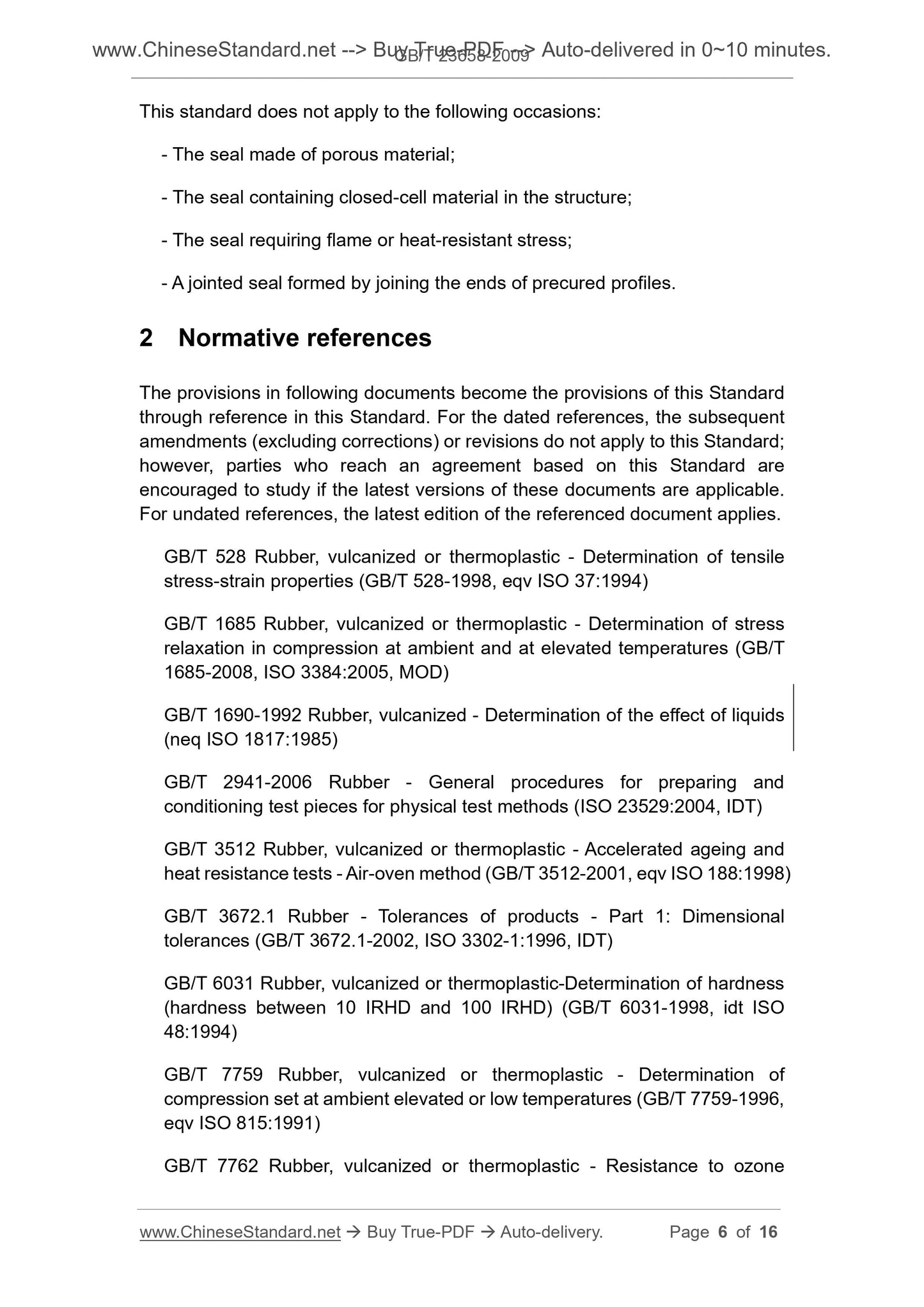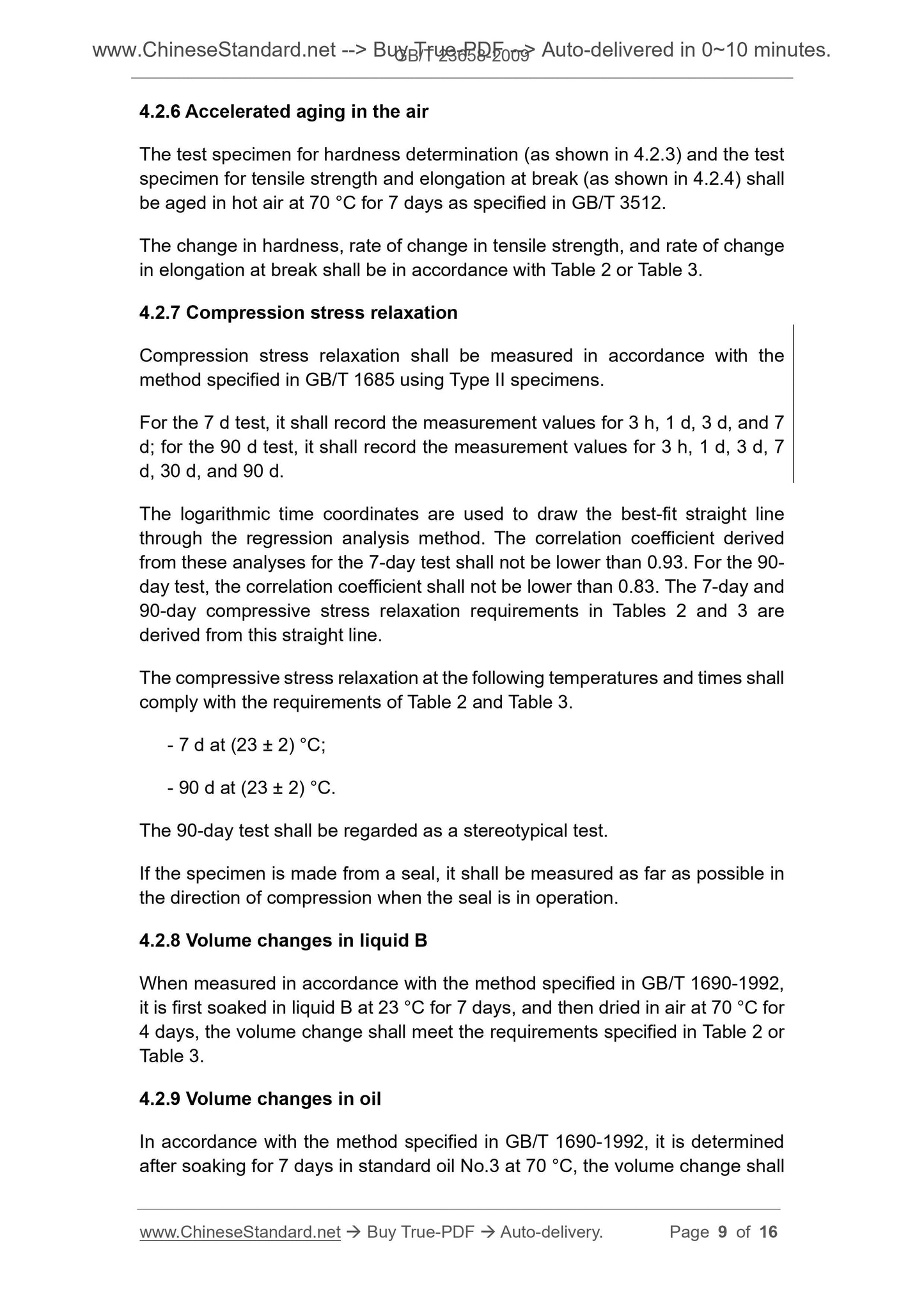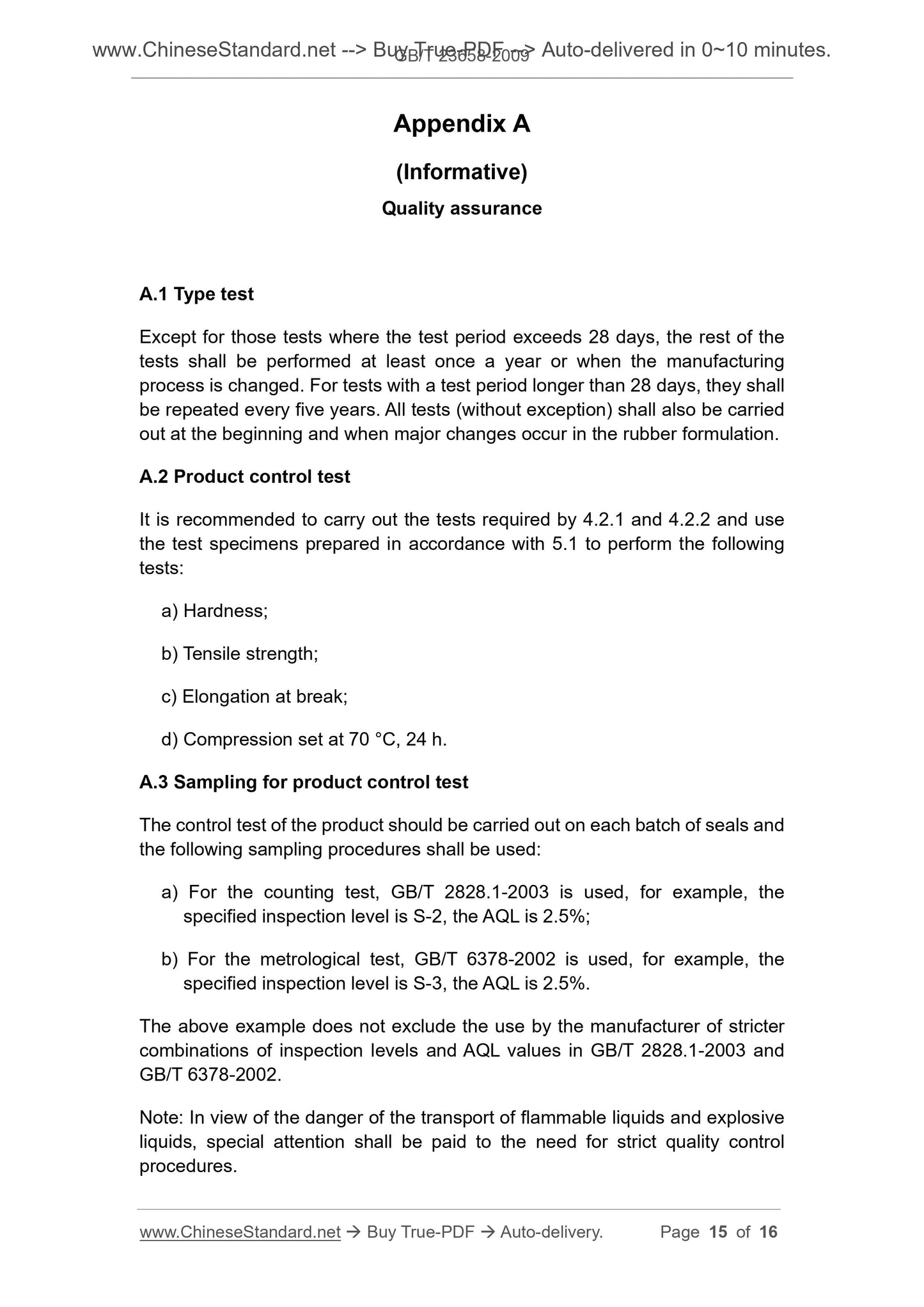1
/
of
7
www.ChineseStandard.us -- Field Test Asia Pte. Ltd.
GB/T 23658-2009 English PDF (GB/T23658-2009)
GB/T 23658-2009 English PDF (GB/T23658-2009)
Regular price
$150.00
Regular price
Sale price
$150.00
Unit price
/
per
Shipping calculated at checkout.
Couldn't load pickup availability
GB/T 23658-2009: Elastomer seals transport gas and hydrocarbon liquids in pipes and fittings with seal material requirements
Delivery: 9 seconds. Download (and Email) true-PDF + Invoice.Get Quotation: Click GB/T 23658-2009 (Self-service in 1-minute)
Newer / historical versions: GB/T 23658-2009
Preview True-PDF
Scope
This standard specifies the requirements for the delivery pipes and fittings,auxiliary devices, and elastomeric seals materials for the valves used for the
following conditions which have a normal working temperature of -5 °C ~ +50 °C
and -15 °C ~ +50 °C under special circumstances.
a) General circumstances (see Table 4, type G series).
- Gas fuels [artificial gas, natural gas and gas-phase liquefied petroleum
gas (LPG)];
- Hydrocarbon liquid having aromatic content (volume fraction) less than
30%, including liquid LPG;
b) Special circumstances (see Table 4, type H). Suitable for conveying
compressed gas fuels and hydrocarbon liquids, which has an aromatic
content (volume fraction) of more than 30%.
This standard also stipulates general requirements for the finished product seal.
The additional requirements for special applications shall be specified in the
corresponding product standards. It shall be noted that the performance of the
pipe joint is related to the properties of the seal material, the geometry of the
seal, and the structure of the pipe joint. If applicable, this standard should be
used in conjunction with product standards that specify the performance of the
pipe joint.
This standard applies to all pipe joints seals, including cast iron pipes, steel
pipes, copper pipes and plastic pipes.
For composite seals, the requirements of 4.2.8 and 4.2.9 apply only to
elastomer parts in contact with gaseous fuels or hydrocarbon liquids.
For materials with hardness grades of 80 and 90, elongation at break,
compression set, and compressive stress relaxation requirements apply only
when the rubber is directly involved in the seal or when the seal is required to
be stable over a long period of time.
This standard does not apply to the following occasions.
- The seal made of porous material;
- The seal containing closed-cell material in the structure;
- The seal requiring flame or heat-resistant stress;
- A jointed seal formed by joining the ends of precured profiles.
Basic Data
| Standard ID | GB/T 23658-2009 (GB/T23658-2009) |
| Description (Translated English) | Elastomer seals transport gas and hydrocarbon liquids in pipes and fittings with seal material requirements |
| Sector / Industry | National Standard (Recommended) |
| Classification of Chinese Standard | G43 |
| Classification of International Standard | 83.140.50 |
| Word Count Estimation | 12,146 |
| Date of Issue | 2009-04-24 |
| Date of Implementation | 2009-12-01 |
| Adopted Standard | ISO 16010-2005, MOD |
| Regulation (derived from) | PRC National Standard Approval Announcement 2009 No.6 (Total No.146) |
| Issuing agency(ies) | General Administration of Quality Supervision, Inspection and Quarantine of the People's Republic of China, Standardization Administration of the People's Republic of China |
| Summary | This standard specifies the delivery pipe and fittings, elastomer seals required auxiliary equipment and valve. a) the general situation (see Table 4, G Series): gaseous fuels (artificial gas, natural gas and liquefied petroleum gas phase (LPG)), aromatic content (volume fraction) of 30% or less of liquid hydrocarbons, including liquid the LPG, b) special occasions (see Table 4, H -type): suitable for transporting compressed gas fuels and aromatic content (volume fraction) materials for more than 30 % of the hydrocarbon liquid. This standard of the finished ring also provides general requirements. For additional requirements needed for special purposes shall be specified in the relevant product standard. Should draw attention to the performance of the work and performance of ring material pipeline interface, seal geometry and structure of the interface on the tube. If applicable, should be used in conjunction with the provisions of this standard pipe joints product performance standards. This standard applies to include cast iron pipe, steel, brass, All the nipple ring, including plastic pipes. For composite seals, 4. 2. 8 and 4. 2. 9 requires only an elastic member in contact with the gas or liquid hydrocarbon fuel. Materials for hardness level 80 and 90, only the rubber seal or directly involved in the long-term stability if applicable requirements elongation at break seals, compression and compression stress relaxation requirements. This standard does not apply to the following situations |
Share
